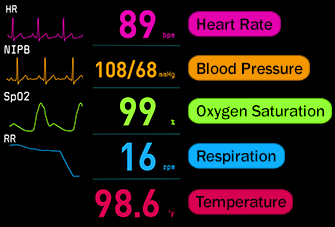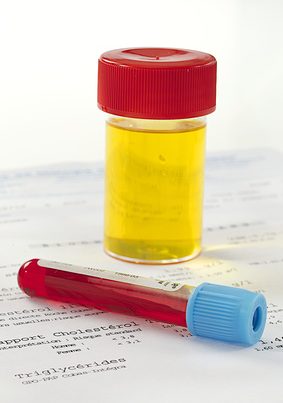
My beeper went off for a rapid response page in the middle of the night. I arrived to the MedSurg floor and the primary nurse gave me a concise summary of her concern. The patient was three days postop, and had become increasingly restless as well as tachycardic during the night. Her blood pressure had not changed but she was concerned.
The patient had a Foley catheter whose urine was cloudy and sediment was present. As the rapid response nurse, I quickly ordered a urinalysis and began my focused assessment. As we collaborated together, sepsis was the most obvious concern. When the urinalysis came back conclusive for a UTI, urosepsis was quickly recognized, the primary care provider contacted, and antibiotics initiated.
This scenario from my practice highlights what I believe is the most important concept in nursing and nursing education.
The ability of the nurse to critically think and clinically reason so that a correct CLINICAL JUDGMENT is made.
Do this and an adverse patient outcome can be avoided.
Fail to recognize a problem EARLY and interpret clinical data incorrectly, and this same patient could have died. See prior blog with nursing implications of “failure to rescue”.
The Most Important Concept in Nursing
In order to strengthen student mastery of content, many nursing programs have adopted a concept based curriculum.
There are over 50 concepts according to Jean Giddens. A sampling of these concepts include:
- Infection
- Inflammation
- Clinical judgment
- Professionalism
- Leadership
- Nutrition
- Elimination
- Safety
- Gas exchange
- Perfusion
- Fluids and electrolyte balance
But are all of these concepts of equal importance and relevance?
From my lens of current clinical practice in critical care, as well as a nurse educator, there is ONE concept that rises to the top and must lay the foundation for all additional content or concepts that is taught in nursing education.
Though critical thinking and clinical reasoning are essential components of safety and thinking like a nurse, the nurse must put it all together and make a correct CLINICAL JUDGMENT.
The foundation of SAFE and effective nursing practice is the ability of the nurse to make a correct clinical judgment (Giddens, 2013).
But clinical judgment cannot be taught directly. In order for students to develop this in their practice, they require clinical experience as well as nurse educators to guide them in their ability to critically think as well as clinically reason.
Equation for SAFE Clinical Practice
The following summarizes the equation of nurse thinking that is required for safe clinical practice (Alfaro-Lefevre, 2013):
Critical Thinking + Clinical Reasoning = Correct Clinical Judgment
When this formula is deeply understood and applied by nurse educators, the foundational components of the equation can be integrated and emphasized to strengthen the clinical judgment of students who will soon become autonomous nurses in practice.
Critical Thinking Defined
Though there are literally 101 definitions of critical thinking in the nursing literature, the essence of critical thinking is the ability of the nurse to UNDERSTAND and apply concepts as well is content that has been taught and apply it to the bedside in a wide variety of unique patient situations and presentations.
When content is contextualized to the bedside this is not only needed to transform nursing education (Benner, Sutphen, Leonard & Day, 2010) but will strengthen and lay the foundation of needed critical thinking in nursing students.
Clinical Reasoning Defined
Though there are numerous definitions of clinical reasoning in the nursing literature, the work of Patricia Benner concisely captures the essence of a practice-based approach to breaking down clinical reasoning so it can be taught and emphasized in nursing education (see prior blog on clinical reasoning)
This is Benner’s definition of clinical reasoning point-by-point (Benner, Sutphen, Leonard & Day, 2010):
- THINK IN ACTION and REASON as a situation CHANGES over time
- Capture and UNDERSTAND significance of clinical TRENDS
- Filter clinical data to recognize what is MOST and least important (RELEVANT)
- Grasp the essence of current clinical situation
- IDENTIFY if actual problem is present
Nurse educators must never forget that emphasizing clinical reasoning is another paradigm shift needed to transform nursing education (Benner, Sutphen, Leonard & Day, 2010)!
Determinants of Clinical Judgment
Making a correct clinical judgment is a complex process that is directly influenced by the clinical experience of the nurse and by what the nurse brings to the patient care scenario, including the ability of the nurse to use knowledge and grasp the essence of the current clinical scenario by using the skill of clinical reasoning. (See prior blog on Tanner’s model of clinical judgment).
Though clinical reasoning represents the ability of the nurse to recognize relevant data, think in action and grasp the essence of the current problem, it is NOT the end point of nurse thinking.
It’s a critical component in the equation of clinical practice to make a correct clinical judgment. What do you decide to do with the data you have collected? Will you act now, or wait? The decision the nurse makes when interpreting clinical data is the essence of making a clinical judgment.
Revisiting Initial Scenario
Let’s break down the rapid response scenario and how the primary nurse utilized critical thinking and clinical reasoning to make a correct clinical judgment.
The nurse was able to apply the content and concepts of infection to the bedside by correctly interpreting the altered mental status, tachycardia, and cloudy urine in the Foley catheter bag. This cluster of data was a blinking red light that required action and was recognized by the nurse.
Clinical reasoning was illustrated because the nurse was able to understand the significance of the trend of clinical data and how it changed.
She was able to recognize what data was most important and able to grasp the essence of the situation by not only interpreting the data correctly, but putting it into context that this patient was high risk for an infection because she was post-op and had an indwelling Foley catheter.
She correctly interpreted the data and identified a problem. That is why she paged a rapid response. Knowing that something was not right is enough. This is a clinical RED FLAG that needs to be recognized!
In Closing
It is imperative that nurse educators emphasize and teach what is most important in nursing practice. In order to prepare nursing students for autonomous professional practice, they must be able to think like a nurse using the thinking skills of critical thinking and clinical reasoning to make a correct clinical judgment.
Make it a priority to contextualize all content and concepts to the bedside as well as integrate clinical reasoning so that students are empowered to have the foundational nurse thinking skills needed when they leave your program.
The ability or inability to make a correct clinical judgment may be the difference between life and death for the patient’s they care for.
What do you think?
How do you emphasize critical thinking and clinical reasoning so student’s are prepared to make correct clinical judgments?
Comment below and let the conversation begin!
RELEVANT YouTubes to Check Out!
If you are a visual learner, I have a YouTube channel THINK Like a Nurse that has videos I have posted that supplement today’s topic of clinical reasoning!
References
- Alfaro-LeFevre, R. (2013). Critical thinking, clinical reasoning, and clinical judgment: A practical approach. (5th ed.). St. Louis, MO: Elsevier–Saunders.
- Benner, P., Sutphen, M., Leonard, V., & Day, L. (2010). Educating nurses: A call for radical transformation. San Francisco, CA: Jossey-Bass.
- Giddens, J. (2013). Concepts for nursing practice. St. Louis, MO: Elsevier.
Keith Rischer – PhD, RN, CEN
As a nurse with over 35 years of experience who remained in practice as an educator, I’ve witnessed the gap between how nursing is taught and how it is practiced, and I decided to do something about it! Read more…
The Ultimate Solution to Develop Clinical Judgment Skills
KeithRN’s Think Like a Nurse Membership
Access exclusive active learning resources for faculty and students, including KeithRN Case Studies, making it your go-to resource.



